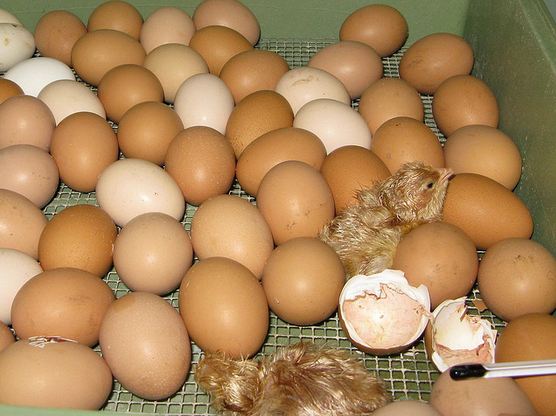

When gathering and handling eggs meant for hatching, there are several things to consider.
Fresh and clean are the two keys to successful hatching egg management.
Gather eggs to be hatched a minimum of two to three times a day. In cold weather gather the eggs a minimum of three times each day.
Keep nests well bedded with straw or other soft, dry, and absorbent material. Giving the birds as clean an environment as possible into which to lay their eggs will both save labor and improve hatchability.
In wet, muddy weather hold the birds indoors until at least 10:00 a.m. to get the eggs laid into dry nests. Provide added nest space if doing this.
If eggs are lightly stained try to clean them with a light scraping using a dull blade or gentle buffing with fine grit sandpaper. Discard any badly stained eggs and those stained with the liquids from broken eggs.
For best results store hatching eggs for no more than seven days. This number can be pushed to ten days, with fourteen days about the maximum to push your luck. I’ve seen texts that report fair results with eggs held for up to twenty-one days, but then I’ve also heard stories of eggs pulled out of a refrigerator after many days and still hatching. I don’t want to take such a chance nor own such a refrigerator.
The best temperature level at which to store hatching eggs is in a range between fifty-five and sixty-five degrees F. In very warm weather I will hold hatching eggs in an all-wire rabbit cage, in an open incubator tray, and have it suspended in a shaded area. It generally takes us two to three days to fill such a forty-eight-egg tray.
Store the eggs in cartons or flats of extra incubator trays. Elevate one side by placing it on a brick or empty egg carton. Then each time you pass them by, turn and elevate the opposite end. This will prevent the air cell from sticking or becoming mis-positioned.
 Contact Jaguza Support
Contact Jaguza Support